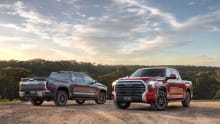Tasmania’s top-five wildlife collision hotspots have been revealed, with Kingston, in the state’s south-eastern district, ahead of the rest (see full table below).
Critically, wildlife collisions are once expected to spike as Australia settles into winter, with a 15 per cent jump likely between May and August, according to the latest data from AAMI.
“As we head into winter, we may see increased activity, particularly from nocturnal wildlife as they cross roads in search of food and water – which we saw after the drought – increasing the likelihood of them being hit,” said NSW Wildlife Information, Rescue and Education Service spokesperson Kristie Newton.
AAMI head of motor claims Anna Cartwright added: “Now is the time for drivers to keep their eyes peeled for wildlife crossing roads and be extra vigilant, especially at dawn and dusk when visibility can be difficult and nocturnal animals are more active.”
Between February 1, 2019, and January 31, 2020, NSW was the worst state for wildlife collisions, with Victoria trailing in second. That said, it was Canberra that led the suburbs.
Top 5 Tasmania wildlife collision hotspots
| Ranking | Suburb |
| 1 | Kingston |
| 2 | Launceston |
| 3 | Cambridge |
| 4 | Hobart |
| 5 | George Town |
Interested in the top-five wildlife collision hotspots in Australia's other states and territories? Here are the links to the results for NSW, Victoria, Queensland, Western Australia, South Australia and ACT.

 It's Tundra time at last, Australia! Toyota's...
It's Tundra time at last, Australia! Toyota's...
 Look out, Kia Carnival: Mitsubishi Delica...
Look out, Kia Carnival: Mitsubishi Delica...
 It's the new Holden vs Ford fight! Toyota...
It's the new Holden vs Ford fight! Toyota...
 Cheap hybrid SUV exclusive! Dacia Duster...
Cheap hybrid SUV exclusive! Dacia Duster...
 Should you sell your Toyota Kluger and buy a...
Should you sell your Toyota Kluger and buy a...
 An alternative to electric cars: Can hydrogen...
An alternative to electric cars: Can hydrogen...
 The MR2 is coming! Prototype testing underway...
The MR2 is coming! Prototype testing underway...
 Revealed: Holden's future plans included...
Revealed: Holden's future plans included...
 Don't order that Mazda CX-3 just yet: Shock...
Don't order that Mazda CX-3 just yet: Shock...
 Cheap, tough, epic: Toyota LandCruiser FJ...
Cheap, tough, epic: Toyota LandCruiser FJ...












.jpg)








Comments